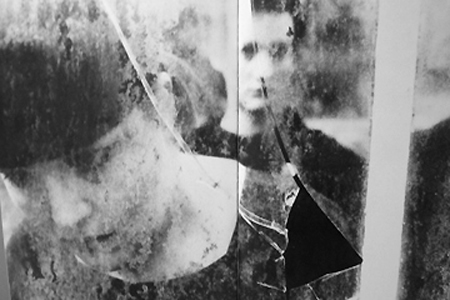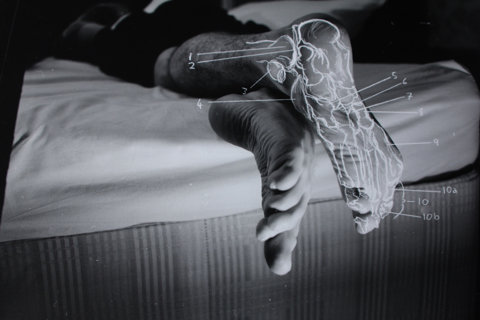Invisible Women
The real conditions of women’s lives were hidden in the sphere of the personal, in private life. The cherished value of privacy rendered women’s reality practically invisible.
Women did not have a name for the tyranny of private life. It was difficult to recognize that a well-established democracy in the public sphere could co-exist with conditions of primitive autocracy or advanced dictatorship in the home.
Sexual assaults against women and chilren were shown to be pervasive and endemic in our culture.
This silence would be broken by a movement that emphasized personal experience.
Rape
Feminists redefined rape as a crime of violence rather than a sexual act. Rape is a method of political control. Susan Brownmiller: “Man’s discovery that his genitalia could serve as a weapon to generate fear must rank as one of the most important discoveries of prehistoric times, along with the use of fire and the first crude stone axe.”
Rape was the feminist movement’s initial paradigm for violence against women in the sphere of personal life.
Only after 1980, when the efforts of combat veterans had legitimated the idea of post-traumatic-stress-disorder, did it become clear that the psychological syndrome seen in survivors of rape, domestic battery, and incest was essentially the same as the syndrome seen in survivors of war.
Family and friends wondered why we were so angry. What are you crying about? they would ask. Why are you so ill-tempered and disaffected? Our fathers and grandfathers had gone off to war, done their duty, come home and got on with it. What made our generation so different? As it turns out, nothing. There was no difference at all. When old soldiers from “good” wars are dragged from behind the curtain of myth and sentiment and brought into the light, they too smolder with anger and alienation. Our anger was old, atavistic. We were angry as all civilized men who have ever been sent to make murder in the name of virtue were angry.
Combat and rape are the public and private forms of organized social violence. 3/4 of those raped are between 13-26. Most conscripts are teenagers. Rape and combat are complementary social rites of initiation into the coercive violence at the foundation of adult society. They are the paradigmatic forms of trauma for women and men respectively.
Since most rapes are committed by acquaintances or intimates, most rapes are not recognized in law.
If one set out to design a system for provoking intrusive post-traumatic symptoms, one could not do better than a court of law. Women who have sought justice in the legal system commonly compare this experience to being raped a second time. Less than one rape in ten is reported. Only 1% of rapes lead to arrest and conviction of the offender. The most common trauma of women remains private. There is no public monument for rape survivors.
Trauma
Adolescence: three normal adaptive tasks: the formation of identity, gradual separation from the family, exploration of a wider social world.
Trauma is an affliction of the powerless. At the moment of trauma, the victim is rendered helpless by overwhelming force. Traumatic events overwhelm the ordinary systems of care that give people a sense of control, connection, and meaning.
Janet: “(Normal memory), like all psychological phenomena, is an action; essentially the action of telling a story… An event has not been digested until we have achieved, not only an outward reaction through our actions, but also an inward reaction through the words we address to ourselves, through the organization of the recital of the event to others, and putting this recital in its place as one of the chapters in our personal history… Anyone who retains a fixed idea of a happening can’t be said to have a memory, it’s only for convenience that we speak of it as a ‘traumatic memory.’”
In their predominance of imagery and bodily sensation, and in their absence of verbal narrative, traumatic memories resemble the memories of young children.
Without the inner picture of caring parents, how can one survive? Is there life without father and mother?
Irene reported a dense amnesia for a two-month time period surrounding her mother’s death. In trance, she was able to reproduce all the harrowing events of those two months, including the death scene, as though they were occuring in the present.
The attachment system, which humans share with many other species, serves a primary function of protecting the young from danger. But in humans, attachment also serves as the basis for the developing child’s ability to regulate emotions. Children who are reliably soothed and comforted when they are in distress gradually learn to comfort themselves by evoking mental images of their caretakers. They develop what Bowlby called “internal working models” of a caring relationship. Safe attachment also functions as a secure base from which the developing child can confidently explore the environment. It permits the development of a self-identity as a person worthy of love and care and a capacity to love and care for others.
A navy vet complained of a persistent numbness, pain and cold from the waist down. He denied any war trauma. After persistent questioning, he recalled the sinking of his ship, and the many hours he spent awaiting rescue in the icy water, but denied having any emotional reaction to the event. He said while clinging to the raft his sensations were extremely painful and he thought of nothing else during the time. He remembered that several men drowned. He owed his life to his concentration on the painful sensations brought on by the cold water. The symptom reproduced his original sensations.
The sense of safety in the world, or basic trust, is acquired in the relationship with the first caretaker. It forms the basis of all relationships. The original experience of care makes it possible for human beings to imagine a world in which they belong.
Safety always begins with the body. If a person does not feel safe in her body, she does not feel safe anywhere.
Common reaction for soldiers: pervasive distrust of community and sense of a “counterfeit” world.
So here’s an experience. Your wife takes you shopping in Wilmington. Last time you walked down a city street, your Marine on point went down the side of the road, checking ahead and scanning the roofs across from him. The Marine behind him checks the windows on the top levels of the buildings and so on down until your guys have the street level covered. In a city there’s a million places they can kill you from. In Wilmington you don’t have a squad, you don’t have a battle buddy, you don’t even have a weapon. You startle ten times checking for it and it’s not there. You’re safe, so your alertness should be at white, but it’s not. Outside, there are people walking around by the windows like it’s no big deal. People who have no idea where Fallujah is, where three members of your platoon died. People who have spent their whole lives at white.
They had been in the water for about 12 hours when a torpedo-boat destroyer picked them up. The officers in the lifeboat were taken off first. The eight or nine men clinging to the raft the patient was on had to wait in the water for 6 or 7 hours longer until help came, some drowned as they awaited rescue. The rescuer’s disregard for his soldier comrades was more traumatic to him than the enemy attack, the physical pain of submersion in cold water, the terror of death, and the loss of other men that day. He developed pathological grief, suffered disrupted relationships, chronic depression. He couldn’t bear to see anyone hurt or threatened, but often felt like hitting people, especially his family. “I wish I were dead; I made everybody around me suffer.”
The traumatized person may no longer seem frightened and may resume the outward forms of her previous life. But the severing of events from their ordinary meanings and the distortion in the sense of reality persists. She may compain that she is just going through the motions of living, observing events of daily life from a great distance. Only the repeated reliving of the moment of horror temporarily breaks through the sense of numbing and disconnection.
Testimonies
*Primo Levi: We have learnt that our personality is fragile, that it is in much more danger than our life; and the old wise ones, instead of warning us ‘remember that you must die,’ would have done much better to remind us of this greater danger that threatens us. If from inside the Lager, a message could have seeped out to free men, it would have been this: take care not to suffer in your own homes what is inflicted on us here. (Survival in Auschwitz/If This is a Man)
After they stabbed me and left me for dead, I suddenly had a very powerful image of my father. I realized I couldn’t die yet because it would cause him too much grief. I had to reconcile my relationship with him. Once I resolved to live, an amazing thing happened. I actually visualized the knot around my wrists, even though my hands were tied behind my back. I untied myself and crawled into the hallway. The neighbours found me just in time. A few minutes more and it would have been too late. I felt I had been given a second chance at life.
Hannah Arendt: The trouble with Eichmann was preceisely that so many were like him, and that the many were neither perverted nor sadistic, that they were, and still are, terribly and terrifyingly normal. From the viewpoint of our legal institutions and of our moral standards of judgment, this normality was much more terrifying than all the atrocities put together.
Political dissident Mauricio Rosencof: Once we got out, we were suddenly confronted with all these problems… Ridiculous problems – doorknobs, for instance. I had no reflex any longer to reach for the knobs of doors. I hadn’t had to – hadn’t been allowed to – for over 13 years. I’d come to a closed door and find myself momentarily stymied, I couldn’t remember what to do next. Or how to make a dark room light. How to work, pay bills, shop, visit friends, answer questions. My daughter tells me to do this or that, and one problem I can handle, two I can handle, but when the third request comes I can hear her voice but my head is lost in the clouds.
Children
Every time I tried to figure out a system to deal with her, the rules would change. I’d get hit almost every day with a brush or a studded belt. As she was beating – I used to be in the corner with my knees up – her face changed. It wasn’t like she was hitting me anymore – it’s as if she was hitting someone else. When she was calm I’d show her the big purple welts and she’d ask “Where did that come from?”
There weren’t any rules; the rules just kind of dissolved after awhile. I used to dread going home. I never knew what was going to happen. The threat of a beating was terrifying because we saw what my father did to my mother. There’s a saying in the army: “shit rolls downhill”. He would do it to her and she would do it to us. One time she hit me with a poker. After awhile I got used to it. I would roll up in a ball.
I would do it by unfocusing my eyes. I called it unreality. First I lost depth perception; everything looked flat, and everything felt cold. I felt like a tiny infant. Then my body would float into space like a balloon.
Inevitably the child concludes that her innate badness is the cause. The child seizes upon this explanation early and clings to it tenaciously, for it enables her to preserve a sense of meaning, hope and power. If she is bad, then her parents are good. If she is bad, then she can try to be good. If, somehow, she has brought this fate upon herself, then somehow she has the power to change it. If she has driven her parents to mistreat her, then, if only she tries hard enough, she may some day earn their forgiveness and finally win the protection and care she so desperately needs.
I am filled with black slime. If I open my mouth it will pour out. I think of myself as the sewer silt that a snake would breed upon.
By developing a contaminated, stigmatized identity, the child victim takes the darkness of the abuser into/against herself and thereby preserves her primary attachments to her parents.
The abused child is unable to form inner representations of a safe, consistent caretaker. This in turn prevents the development of normal capacities for emotional self-regulation. The fragmentary, idealized images that the child is able to form cannot be evoked to fulfill the task of emotional soothing. They are too meager, incomplete. In the course of normal development, a child achieves a secure sense of autonomy by forming inner representations of trustworthy and dependable caretakers, representations that can be evoked mentally in moments of distress.
Arthur told his therapist that he still feared his father, even though he had been dead for ten years. He felt that his father was watching him and could control him from beyond the grave. He believed that the only way to overcome his father’s demonic power was to unearth his body and drive a stake through his heart.
A disordered and fragmented identity deriving from accomodations to the judgments of others.
Three major forms of adaptation permit the child to survive in an environment of chronic abuse: the elaboration of dissociative defenses, the development of a fragmented identity, the pathological regulation of emotional states.
For the sake of their children, survivors are often able to mobilize caring and protective capactities that they have neer been able to extend to themselves.
Masks
Indochinese Refugee Clinic: The funereal atmosphere was finally broken – not only after we witnessed that some patients had improved, but also after staff recognized that many of our patients were infecting us with their hopelessness.
The tendency to blame the victim has led researchers to seek an explanation for the perpetrator’s crimes in the character of the victim. “What is surprising is the enormous effort to explain male behaviour by examining characteristics of women.”
The diagnosis of paranoid-schizophrenic was not offered me where I could look kindly back onto the earnest doctor and say, “You’re wrong. It’s really just a lifetime of grief.”
The Los Angeles riots were provoked by the failure of the justice system to hold armed white police officers accountable for the severe beating of an unarmed black man. Within the African-American community, it was widely understood that such abuses were political crimes, carried out as part of a systematic pattern of racial oppression.
Recovery
I begin to see some of what those silent, unspoken words never said. I saw a mask. It looked like me. I took it off and beheld a group of huddled, terrified people who shrank together to hide terrible secrets.
The core experiences of trauma are disempowerment and disconnection from others. Recovery is based on the empowerment of the survivor and the creation of new connections.
Recovery unfolds in three stages. The central task of the first stage is the establishment of safety (survivors feel unsafe in their bodies). The second stage is remembrance (telling story of trauma) and mourning. The third stage is reconnection with ordinary life.
One observer describes the trauma story in its untransformed state as “pre-narrative.” It does not develop or progress in time, and it does not reveal the storyteller’s feelings or interpretation of events. Another therapist describes traumatic memory as a series of snapshots or a silent movie; the role of therapy is to provide the music and words.
The reconstruction of the trauma requires immersion in a past experience of frozen time; the descent into mourning can feel like a surrender to tears that are endless.
After gradually disclosing his involvement in a pedophilic sex ring, Paul suddenly announced that he had fabricated the entire story. He threatened to quit therapy immediately unless the therapist professed to believe that he had been lying all along. Up until this moment, of course, he had wanted the therapist to believe he was telling the truth. The therapist admitted she was puzzled by this turn of events. She added: “I wasn’t there when you were a child, so I can’t pretend to know what happened. I do know that it is important to understand your story fully, and we don’t understand it yet. I think we should keep an open mind until we do.” Paul grudgingly accepted this premise. In the course of the next year of therapy, it became clear that his recantation was a last-ditch attempt to maintain his loyalty to his abusers.
Having come to terms with the traumatic past, the survivor faces the task of creating a future. She has mourned the old self that the trauma destroyed; now she must develop a new self. The psychological experience can only be compared to immigration. They must build a new life within a radically different culture. How would I like to feel?
The survivor no longer feels possessed by her traumatic past; she is in possession of herself.
I came to the point where I understood they weren’t my fantasies. They’d been imposed on me through the abuse. And gradually I began to be able to have orgasms without thinking about SM, without picturing my father doing something to me. Once I separated the fantasy from the feeling, I’d consciously impose other powerful images on that feeling – like seeing a waterfall. If they can put SM on you, you can put waterfalls there instead. I reprogrammed myself.
These survivors recognize a political or religious dimension in their misfortune and discover they can transform the meaning of their personal tragedy by making it the basis for social action. They can make it a gift to others.
I want women to have some sense of hope, because I can just remember how terrifying it was not to have any hope, the days I felt there was no way out. I feel very much like that’s part of my mission, part of why God didn’t allow me to die in that marriage, so that I could talk publicly about being battered.
The psychologist Mary Harvey defines seven criteria for the resolution of trauma. First, the physiological symptoms of PTSD have been brought within manageable limits. Second, the person is able to bear the feelings associated with traumatic memories. Third, the person has authority over her memories: she can elect both to remember the trauma and to put memory aside. Fourth, the memory of the traumatic event is a coherent narrative, linked with feeling. Fifth, the person’s damaged self esteem has been restored. Sixth, the person’s important relationships have been reestablished. Seventh and finally, the person has reconstructed a coherent system of meaning and belief that encompasses the story of the trauma.
Since Vietnam I’d never had a friend. I had a lot of acquaintances, I knew a lot of women, but I never really had a friend, someone I could call at four o’clock in the morning and say I feel like putting a .45 in my mouth because it’s the anniversary of what happened to me at Xuan Loc.
My main regret is excessive self-involvement. Too often I was sleep walking through other people’s lives, eyes turned inward while I washed the blood off my hands. My toughest lesson was to renounce my own sense of specialness, to let the princess die along with the guilt-ridden child in my closet, to see instead the specialness of the world around me.
Because a trauma-focused group is time-limited, much of the integrative work is done at the closing session. The ending is highly formalized. Each participant is asked to prepare, in writing, an assessment of her own accomplishments during the group, a well as an estimate of the recovery work that lies ahead for her. She is asked to prepare the same kind of assessment for every other group member, as well as to provide feedback for group leaders. Finally, each is asked to prepare an imaginary gift for every other member of the group.
(gift to Johanna – a declaration from another group member): I wish so many things for you Johanna. I wish for you to take hold of that strong Johanna and not ever let go of yourself again. And I wish you strength to fight for your won existence on this earth. And I wish you determination to fight for the things you believe in: your independence, freedom, a healthy marriage, education, a career, and ORGASMS with a big ‘O’! And I wish you more meat on your bones and no matches for your cigarettes! But most of all, Johanna, I wish for you to value what and who you are.
The psychologists Yael Fischman and Jaime Ross describe a group for exiled torture survivors in which the written ‘testimony’ method is incorporated into the group process, and group members are asked to narrate one another’s experiences.
The biggest things for me are the benefits of not keeping a secret and being able to talk about things that I thought if I ever talked about them I would melt and disappear into the ground.




